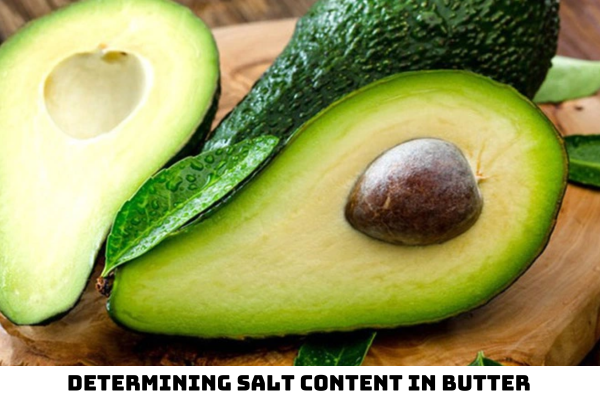What are the requirements for reagents used in determining salt content in butter under Vietnam Standard TCVN 8148: 2009?
- What are the requirements for reagents used in determining salt content in butter under Vietnam Standard TCVN 8148: 2009?
- What are the regulations on the sampling and preparation of test samples specified in Vietnam Standard TCVN 8148: 2009?
- What are the requirements during the determination of salt content in butter under Vietnam Standard TCVN 8148: 2009?
What are the requirements for reagents used in determining salt content in butter under Vietnam Standard TCVN 8148: 2009?
In Section 5 of Vietnam Standard TCVN 8148: 2009, the requirements for reagents used in determining salt content in butter are specified as follows:
Use only analytical purity type reagents, unless otherwise stated, and use distilled or mineral-grade water or water of equivalent purity, which does not contain chlorides.
* Silver nitrate standard solution (AgNO3), known concentrations between 0.08 mol/l and 0.10 mol/l.
Dissolve an amount of 13.6 g to 20.4 g of silver nitrate in water that has been completely decarbonized carbon dioxide in a rated jar of 1,000 ml. Add water to the bar. Calibration of silver nitrate solution with 100 ml of 0.400 g/l sodium chloride (NaCl) solution (sodium chloride was dried at 300 oC), according to procedures in 9.3.2 and 9.4. Denotes the concentration of silver nitrate solution in moles per liter to four decimal places. Store the solution away from direct light.
Note: If a solution of 14.53 g/l (0.085.5 mol/l) of silver nitrate is used, 1 ml of this solution is equivalent to 5 mg of sodium chloride, it will be easier to calculate the salt content of butter.
* Potassium chromate indicator solution
Dissolve 50 g of potassium chromate (K2CrO4) in 1,000 ml of water.
In addition, in Section 6 of Vietnam Standard TCVN 8148: 2009, equipment and tools are required as follows:
Use equipment and instruments of ordinary and specific laboratories as follows:
- Analytical balance, which can weigh accurately up to 0.001 g.
- Titrators, made of glass, e.g. cones or cups with a 250 ml beak.
- Graduated copper tube, capacity 100 ml, conforms to ISO 4788.
- Pipet, dispensable 2.0 ml, conforms to TCVN 7151 (ISO 648).
- Buret, capacity 50 ml, conforms to class B of TCVN 7149 (ISO 385).
- Weighing paper or plastic film, which does not contain chloride or contains chloride content at a level that does not affect the results. It is not recommended to use filter paper.

What are the regulations on the sampling and preparation of test samples specified in Vietnam Standard TCVN 8148: 2009?
In Section 7 of Vietnam Standard TCVN 8148: 2009, the requirements for sampling are as follows:
- The sample sent to the laboratory must be representative. The sample is not damaged or altered during transportation and storage.
- Sampling is not specified in this standard. It is recommended to take samples according to TCVN 6400 (ISO 707).
- Preservation of the sample from damage and changes in composition.
In Section 8 of Vietnam Standard TCVN 8148: 2009, the requirements for the preparation of test samples are as follows:
- Take the representative sample for testing.
- If the test sample is inconsistent or the expected sample shows unevenness (storage time, storage conditions), mix the test sample as follows: Warm the test sample in the original covered container, so that the sample is filled with one-two-to-two-thirds of the jar, preferably at a temperature not exceeding 30 oC. At this temperature, the sample will be soft enough to mix completely to a homogeneous state (using a mechanical shaker or manual shaking).
- Cool the sample to ambient temperature, mixing continuously until completely cooled. Immediately after cooling, open the lid of the container and stir gently with an appropriate tool, e.g. with a spoon or mixing knife, for no more than 10 seconds before weighing.
What are the requirements during the determination of salt content in butter under Vietnam Standard TCVN 8148: 2009?
The requirements during the determination of salt content in butter are specified in Section 9, Vietnam Standard TCVN 8148: 2009 as follows:
* Number of determination tests
If it is necessary to meet the recurrence limit requirement (11.1), perform two separate determinations according to 9.2 and 9.3.
* Test sample section
Weigh from 4.5 g to 5.5 g of the sample part, accurate to 0.05 g, and transfer directly to the titration vessel (6.2) or onto a piece of weighing paper or plastic film (6.6) and transfer to the titrator
Add 100 ml of boiling water or 100 ml of cooled water and bring to a boil
Mix the contents of the jar
* Determination
- Titration can be done on a hot solution or when cooled. This is necessary, however, each laboratory standardizes its determination procedure by always bringing the temperature of the amount contained in the titration vessel to approximately the temperature before titration.
Titration is carried out at a temperature of about 50 oC. This temperature can prevent (in part) the coagulation of butterfat from affecting the yellow-orange color.
- Cool down when mixing the contents of the titration vessel to the standardized temperature of the test laboratory. Add 2.0 ml of potassium chromate indicator (5.2).
Use a solution of silver nitrate (5.1) for titration, during titration always stir until a durable yellow-orange color is obtained for 30 s. Record the volume of silver nitrate used, in milliliters.
* White test
Use all reagents but no sample section to conduct the white test
LawNet